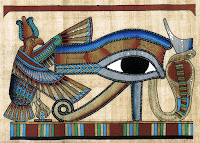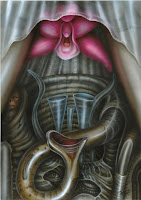The most important "mystic" or "occult" symbol Gurdjieff's "Work" has introduced to the West is enneagram, an occult glyph resembling in some respects Rosicrucian geometrical constructs or Kabbalistic Tree of life. As the story goes (1,7,8), it is prominent among Islamic mystics, Sufis. But- there is a little problem. Not one known Sufi order (and there are more than hundred of them, most notable being Naqshbandis, Mevlevis, Chistis, Qadiris at al.) knows of and uses this symbol.
So, probably, enneagram represents a modified remnant of Neopythagorean and Hermetic tradition that has percolated and survived in Islamic "esoteric" circles; most likely candidates being Ismaili Shiites, spiritual descendants of famous Ihwan-al-Safa (men of learning, an encyclopedic group flourishing around 8/9 century C.E.) and dreaded and slandered (French scholar Henry Corbin has done much to rehabilitate them) Assassins, a secret society on its acme at 11/12 century C.E., until their mountain strongholds in the Caucasus had been destroyed during Mongol invasion in the 13th century.
Finally, a word on the glyph: it is an archaic cosmologic-spiritual symbol, originating in Sumero-Chaldean milieu and concisely summarizing their conception of the Universe & descent and ascent of the "soul". Having undergone further modifications in Neopythagorean and Neoplatonist schools, probably in Alexandria, it has been, as some stories indicate, transmitted via the Ismailis's sixth Imam, Jafar-as-Sadiq, to some of their "occult" branches. Essentially, enneagram represents Hermetic, spherical Ptolemaic and geocentric cosmos as preserved in the traditions of Mandeans and Sabeans, later enriched and restructured by the Neoplatonist influences. So, enneagram which makes some sense ( at least when interpreted through scholarly works by S.H.Nasr, Burckhardt, Berthelot ) is a summary of ideas and processes ancient proto-scientists imagined cosmos and psyche ( they didn't make much distinction ) to be governed by. It is the veritable irony of history that a fossil of palaentological spiritual cognition has become a New Age icon.
Gurdjieff's use of the enneagram symbol is most visible in his Russian (post -1915) and European years, when he gathered a cluster of disciplined devotees and made stage appearances with them, both in Europe and the US (mainly in the 1920s). Usually, his disciples danced along enneagram points and lines, self-observing themselves, until under Gurdjieff's command "Stop !" they would freze up in an act of (supposedly) self-remembering, when, at least in theory, Gurdjieff would transmit spiritual (or, more likely, bioenergy equivalent to Taoist ch'i) to their susceptible psyches with the aim to elevate and expand their consciousness and being- an exercise in some points resembling the transfer of Sufi barrakah (blessing, spiritual energy) or Tantric shaktipat. Also, the profile of dances, devised by Gurdjieff himself, betray influences of Sufi and Vajrayana/Tibetan traditions.
Enneagram doesn't play a prominent role in his own writings, and, apart from his early and middle periods (1915- 1920ies, with the significant pause in 1925, when he barely survived a car-crash), it is mainly preserved in Ouspensky's books. Later "enneagrammoratos", from Idries Shah to Arica's Oscar Ichazo and Claudio Naranjo are not part of this essay.
Related books:
Kathleen Riordan Speeth: The Gurdjieff Work, Pocket Books, 1978
Views from the Real World: Early Talks of Gurdjieff
G.Gurdjieff: The Herald of Coming Good
G.I.Gurdjieff: Beelzebub's Tales to His Grandson
Gurdjieff: Life is real only then, when "I am"
C.S.Nott: Teachings of Gurdjieff
C.S.Nott: Further Teachings of Gurdjieff
J.G.Bennett: Gurdjieff: Making a New World
L. A. Govinda: Foundations of Tibetan Mysticism
Roberto Assagioli: Psychosynthesis
Roberto Assagioli: The Act of Will
Ouspensky: In Seach of the Miraculous
Ouspensky: The Fourth Way
H.Spencer Lewis: Rosicrucian Manual, AMORC; 1st edition 1918
You can try to find some of them at AbeBooks - New Books section. Failing that your best option is checking the used books section.
Check: Naqshbandi and Mevlevi connection, present affiliates.
Find: Pictures of enneagram and its derivatives, possible changes.
Source: Author needed.
Read more...





